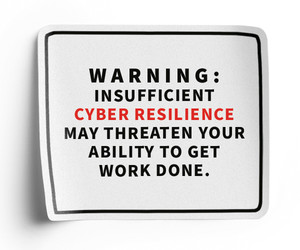Compliance regulations are constantly changing, and organizations are struggling to keep up. The stakes are high. Failing to adhere to legal requirements can result in serious repercussions from government agencies.
For example, the Department of Justice has sued TikTok, its parent company ByteDance and other affiliated companies for violating the Children’s Online Privacy Protection Act regarding use of personal information from children under age 13. Meanwhile, credit bureau Equifax paid a $575 million settlement in 2019, including $100 million in fines for failing to comply with the Gramm-Leach-Bliley Act, which calls for businesses to safeguard customer data.
Common compliance regulations include the Payment Card Industry Data Security Standard and the General Data Protection Regulation (GDPR).
Compliance management software is valuable for organizations because it helps IT leaders “meet regulatory requirements, internal policies and industry standards,” according to IBM. The system can manage, automate and oversee various data protection rules so organizations “avoid areas of noncompliance.”
Organizations can’t legally operate if they don’t comply with certain regulations. For example, a health insurance company must comply with HIPAA rules for patient information, and retailers that take credit cards cannot operate without PCI compliance.
To keep track of regulatory changes and minimize legal risks, organizations turn to partners that offer compliance management software, which can help unify various data protection rules.
Click the banner below to learn how to manage risk and compliance in a modern IT landscape.
What Is Compliance Management Software?
Compliance management software and solutions allow enterprises to stay in line with legal and regulatory requirements. It can help organizations reduce their legal risks and avoid fines and cyberattacks. Companies that offer compliance management services include Check Point Software Technologies, IBM and LexisNexis. Solutions such as Idera SQL Compliance Manager provide real-time monitoring, alerts and auditing to ensure compliance with regulations such as HIPAA and the Sarbanes-Oxley Act, which aims to prevent corporate fraud.
LEARN MORE: Can AI help businesses improve their compliance?
Why Is Compliance Important?
Christopher Fielder is field CTO for Arctic Wolf, which offers compliance management as part of its concierge service within its security platform. He defines compliance management software as “a tool that allows an organization to achieve its compliance goals” and meet the standards for its industry.
If a mom-and-pop shop sells its products across the world, for example, it would then need to adhere to GDPR rules about data residency, Fielder explains. Because not every company can afford to hire a compliance officer, they turn to partners with compliance software to help them adjust to relevant regulatory requirements.
“It allows you to holistically look at your environment, your business, your technical controls that are in place and make sure they adhere to these regulations,” says Aaron Rose, security architect manager for vertical solutions at Check Point.
Fielder stresses that just because an organization uses software to remain compliant, that does not mean the company is secure. That’s why he says compliance management software is not a “silver bullet.”
“It means you have achieved a level that is recognized and a bare minimum set of standards, but you still have a lot of work left to go,” Fielder says.
Compliance software provides continuous monitoring of an organization’s data to ensure it is compliant with changing regulations as the organization grows. Because many IT managers are not specialists in law, compliance management software can help make compliance more efficient, Rose says.
Fielder sees compliance as part of a roadmap to achieving overall security. Part of that map entails identifying which regulations an organization must follow.
RELATED: This checklist could improve your compliance strategy.
What to Look for in Compliance Management & Monitoring Software
Automation is a key component of compliance management software. For example, Check Point uses generative artificial intelligence to monitor changes in regulations and how they impact a business. The software alerts organizations when they need to increase compliance, and it can make corrections itself, according to Rose.
“Our customers don’t see this in the back end, but we use some of our AI copilot capabilities to help us with that because AI is excellent when it comes to law and regulation,” Rose explains.
However, Fielder warns that people must oversee the automation to avoid erroneous configuration changes when patching software.
“It takes the weight off people, but by no means does it take people out of the equation,” he says.
Automation can help an organization check off steps in the compliance process and identify where it must make changes to comply with a regulation, according to Fielder.
Without automated compliance software, a compliance officer would typically check a spreadsheet manually on a weekly, monthly or quarterly basis. Now, upper management and other employees can specify the frequency of the compliance reports they receive, Rose says.
“Instead of doing all that manual work, an automated tool can give you a report that is essentially audit-ready. That’s quite powerful,” he says.
Check Point’s compliance tools let organizations customize a compliance profile and configure controls based on relevant regulations. If a report indicates that an organization must make changes to its environment, the tools can limit access; for example, restricting payment card information only to the employees who would need it.
UP NEXT: How financial institutions can navigate a changing cybersecurity landscape.
Compliance software can also gather information about an organization’s cloud environment to see how it’s configured. It collects and matches data against regulations, then generates reports on compliance, Rose says. Widgets, or AI bots, can remediate compliance problems automatically. In addition, application programming interfaces let organizations monitor their compliance within environments such as Amazon Web Services and Google Cloud.
After determining which regulations apply to them, organizations should find a partner to audit their environment for compliance. With the right software and services, organizations can meet the compliance requirements for their industry and avoid hefty fines.













